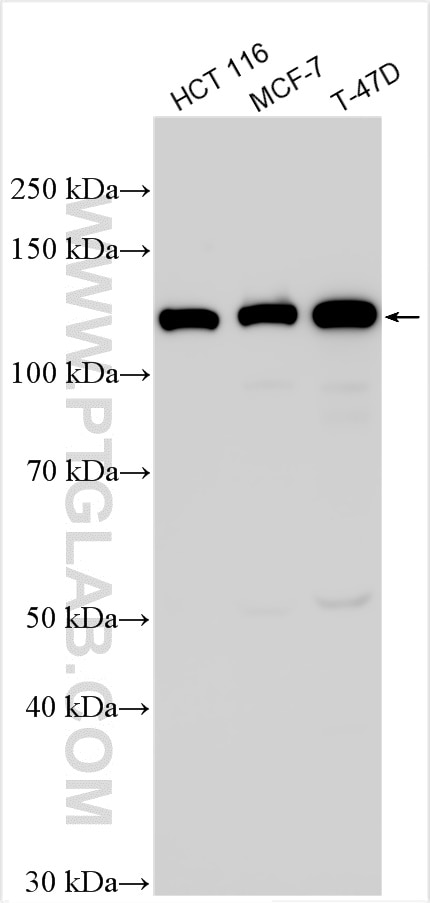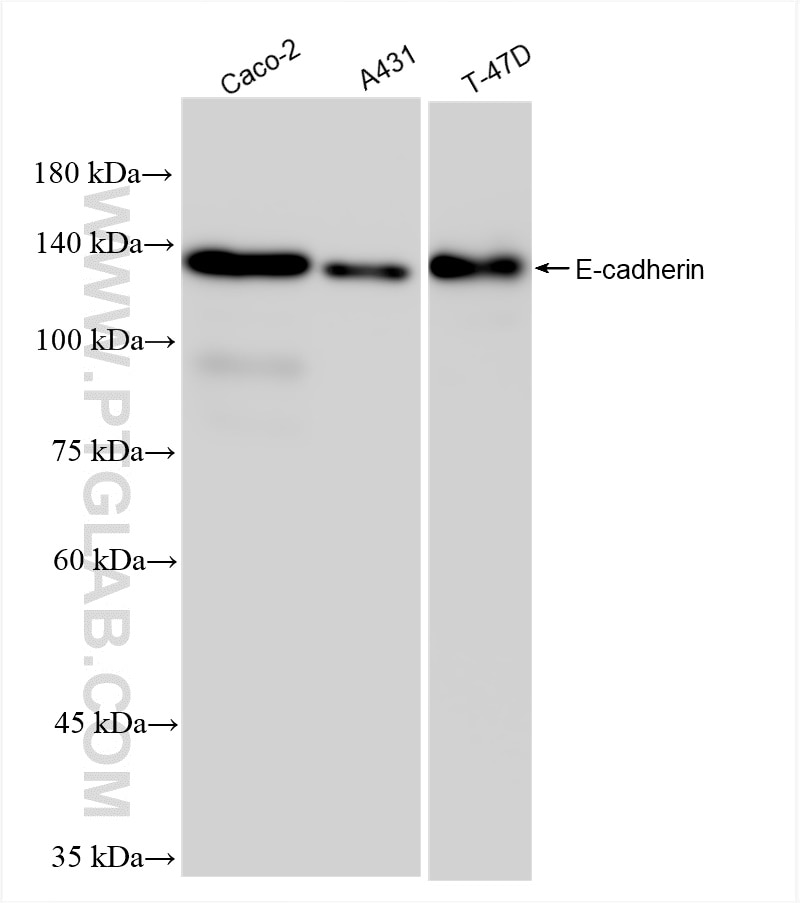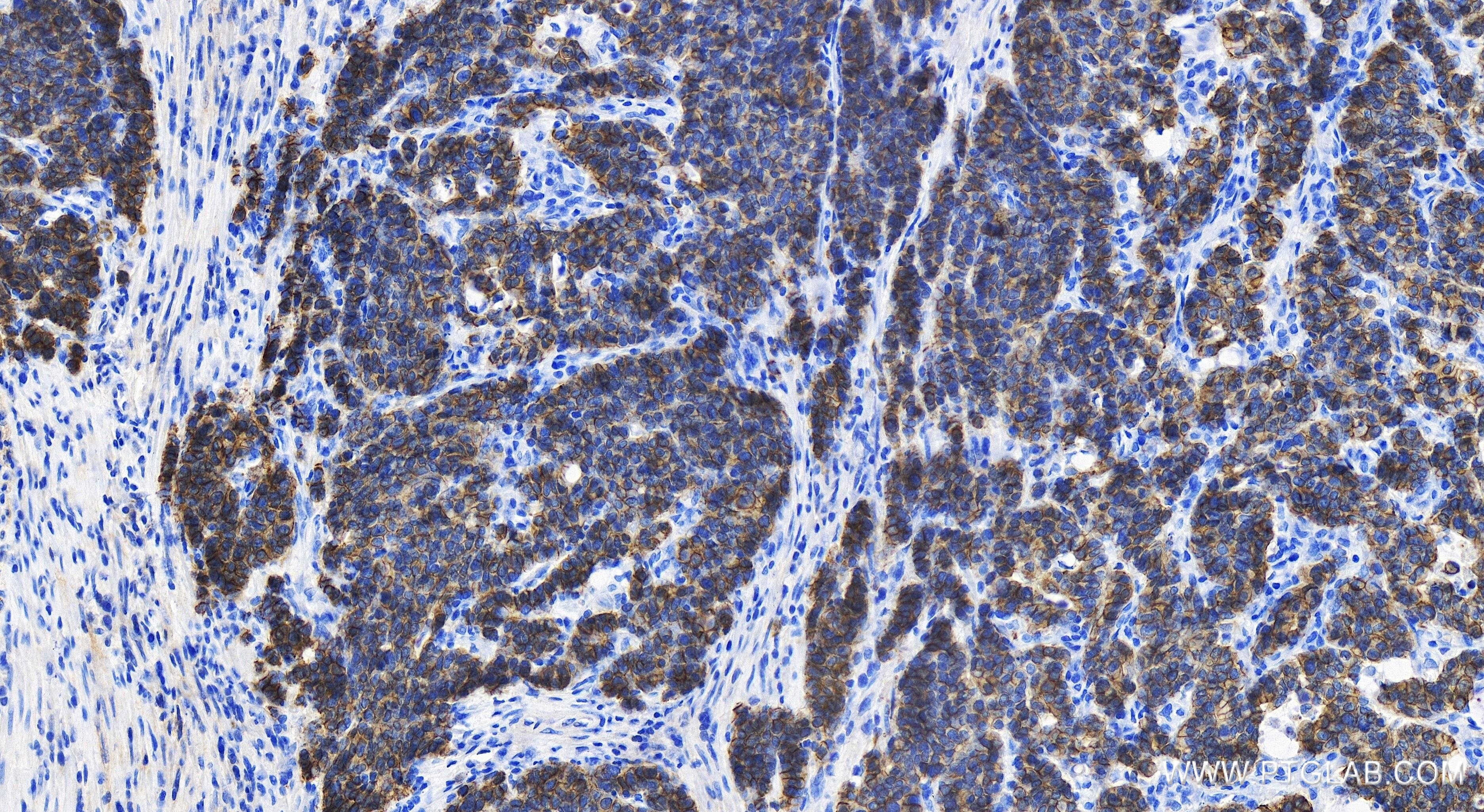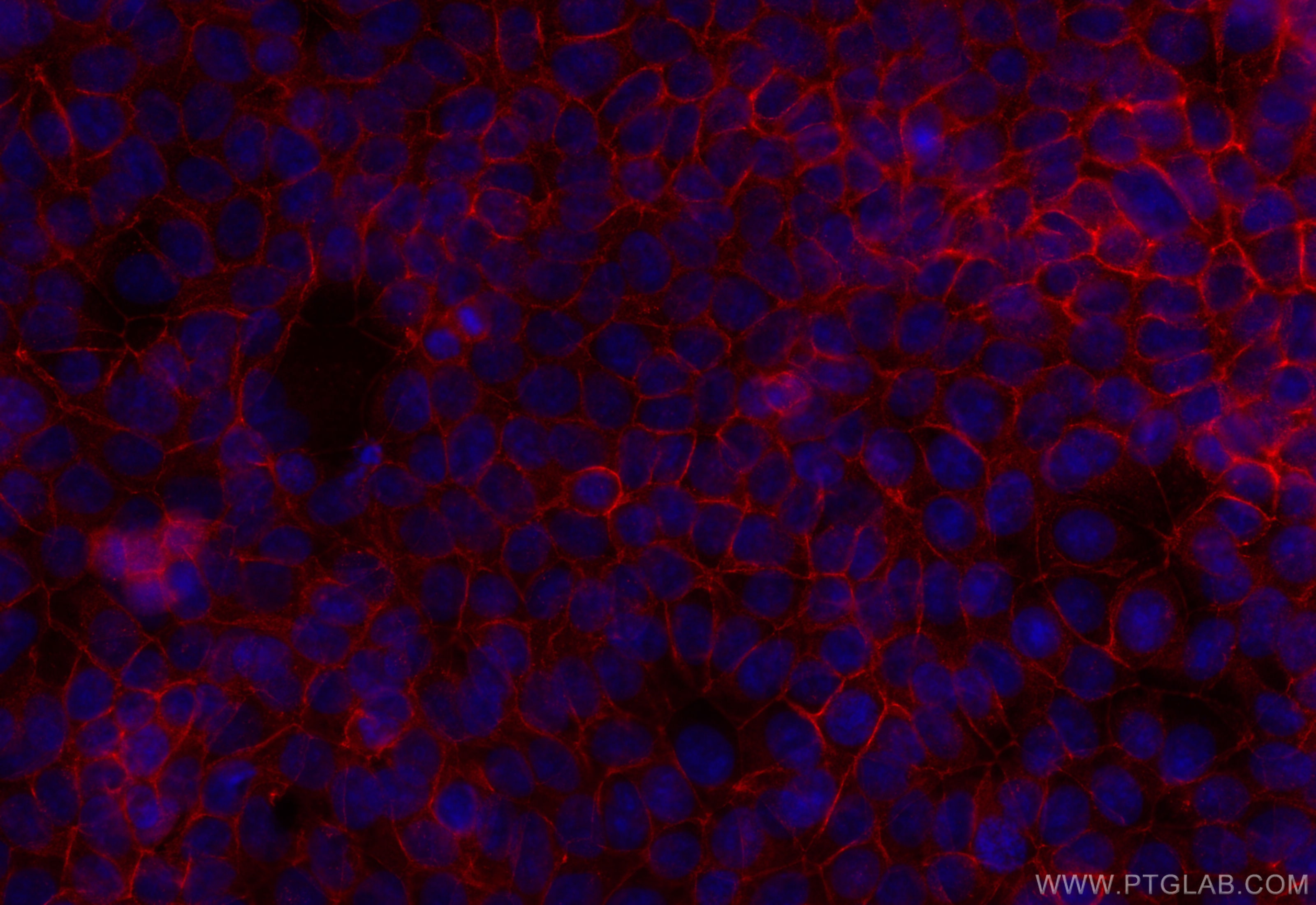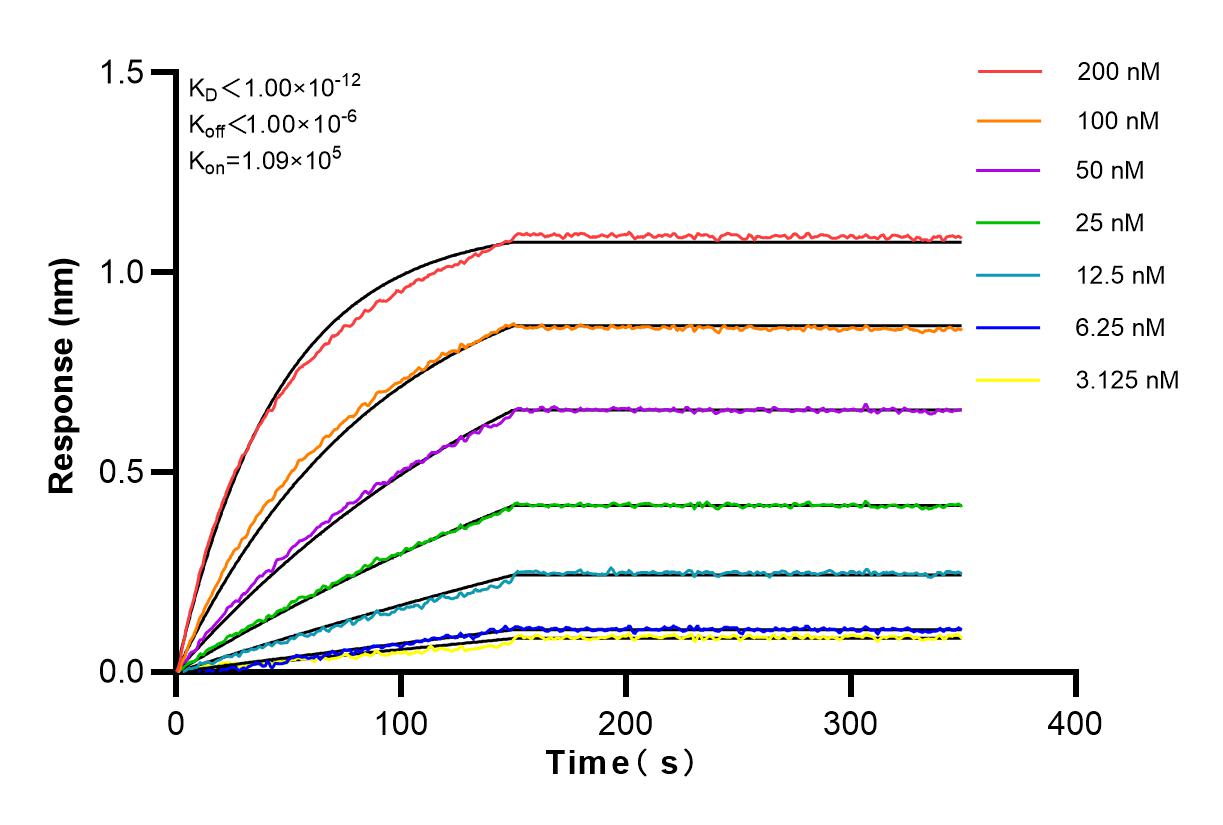Anticorps Recombinant de lapin anti-E-cadherin
E-cadherin Recombinant Antibody for WB, IHC, IF/ICC, ELISA
Hôte / Isotype
Lapin / IgG
Réactivité testée
Humain et plus (1)
Applications
WB, IHC, IF/ICC, ELISA
Conjugaison
Non conjugué
CloneNo.
240159C10
N° de cat : 80541-5-RR
Synonymes
Galerie de données de validation
Applications testées
| Résultats positifs en WB | cellules HCT 116, cellules A431, cellules Caco-2, cellules MCF-7, cellules T-47D |
| Résultats positifs en IHC | tissu de cancer de l'estomac humain, il est suggéré de démasquer l'antigène avec un tampon de TE buffer pH 9.0; (*) À défaut, 'le démasquage de l'antigène peut être 'effectué avec un tampon citrate pH 6,0. |
| Résultats positifs en IF/ICC | cellules MCF-7, |
Dilution recommandée
| Application | Dilution |
|---|---|
| Western Blot (WB) | WB : 1:5000-1:50000 |
| Immunohistochimie (IHC) | IHC : 1:200-1:800 |
| Immunofluorescence (IF)/ICC | IF/ICC : 1:250-1:1000 |
| It is recommended that this reagent should be titrated in each testing system to obtain optimal results. | |
| Sample-dependent, check data in validation data gallery | |
Applications publiées
| WB | See 6 publications below |
| IF | See 1 publications below |
Informations sur le produit
80541-5-RR cible E-cadherin dans les applications de WB, IHC, IF/ICC, ELISA et montre une réactivité avec des échantillons Humain
| Réactivité | Humain |
| Réactivité citée | Humain, souris |
| Hôte / Isotype | Lapin / IgG |
| Clonalité | Recombinant |
| Type | Anticorps |
| Immunogène | E-cadherin Protéine recombinante Ag14973 |
| Nom complet | cadherin 1, type 1, E-cadherin (epithelial) |
| Masse moléculaire calculée | 882 aa, 97 kDa |
| Poids moléculaire observé | 135 kDa |
| Numéro d’acquisition GenBank | BC141838 |
| Symbole du gène | E-cadherin |
| Identification du gène (NCBI) | 999 |
| Conjugaison | Non conjugué |
| Forme | Liquide |
| Méthode de purification | Purification par protéine A |
| Tampon de stockage | PBS with 0.02% sodium azide and 50% glycerol |
| Conditions de stockage | Stocker à -20°C. Stable pendant un an après l'expédition. L'aliquotage n'est pas nécessaire pour le stockage à -20oC Les 20ul contiennent 0,1% de BSA. |
Informations générales
Cadherins are a family of transmembrane glycoproteins that mediate calcium-dependent cell-cell adhesion and play an important role in the maintenance of normal tissue architecture. E-cadherin (epithelial cadherin), also known as CDH1 (cadherin 1) or CAM 120/80, is a classical member of the cadherin superfamily which also include N-, P-, R-, and B-cadherins. E-cadherin is expressed on the cell surface in most epithelial tissues. The extracellular region of E-cadherin establishes calcium-dependent homophilic trans binding, providing specific interaction with adjacent cells, while the cytoplasmic domain is connected to the actin cytoskeleton through the interaction with p120-, α-, β-, and γ-catenin (plakoglobin). E-cadherin is important in the maintenance of the epithelial integrity, and is involved in mechanisms regulating proliferation, differentiation, and survival of epithelial cell. E-cadherin may also play a role in tumorigenesis. It is considered to be an invasion suppressor protein and its loss is an indicator of high tumor aggressiveness.
Protocole
| Product Specific Protocols | |
|---|---|
| WB protocol for E-cadherin antibody 80541-5-RR | Download protocol |
| IHC protocol for E-cadherin antibody 80541-5-RR | Download protocol |
| IF protocol for E-cadherin antibody 80541-5-RR | Download protocol |
| Standard Protocols | |
|---|---|
| Click here to view our Standard Protocols |
Publications
| Species | Application | Title |
|---|---|---|
Sci Rep Hypoxia and lipid metabolism related genes drive proliferation migration and immune infiltration mechanisms in colorectal cancer subtyping | ||
J Cancer Res Clin Oncol CircWDR78 inhibits the development of colorectal cancer by regulating the miR-653-3p/RGS4 axis | ||
Sci Rep Molecular mechanisms of lung injury from ultra high and conventional dose rate pulsed radiation based on 4D DIA proteomics study | ||
Int Immunopharmacol Role of COL5A1 in lung squamous cell Carcinoma: Prognostic Implications and therapeutic potential | ||
Pharmaceuticals (Basel) Antitumor Activity of USP7 Inhibitor GNE-6776 in Non-Small Cell Lung Cancer Involves Regulation of Epithelial-Mesenchymal Transition, Cell Cycle, Wnt/β-Catenin, and PI3K/AKT/mTOR Pathways | ||
Nat Commun Splicing diversity enhances the molecular classification of pituitary neuroendocrine tumors |
